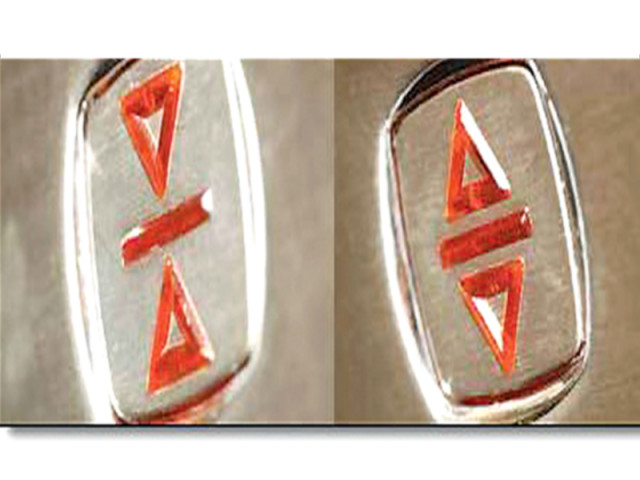
With all the things we have to helplessly wait for in our daily lives — traffic lights, customer service, long lines — it’s nice to know there are some things we have some control over, like closing the elevator door faster with the handy “door close” button.
Unfortunately, this is a lie to appease the masses. In most cases, elevator “door close” buttons do nothing. According to 47-year elevator maintenance veteran John Menville, the “door close” button is just there to give people the illusion of control. It’s a release valve so that after you have to wait for a million stupid things during the course of the morning, this isn’t the straw that breaks the camel’s back and causes you to go maybe break something!
Fuel gauges
The gas tank is 100 percent full when the needle is pointing to “F” and completely empty when the needle is at the bottom, right?
Actually, no. You might have noticed that for the first 50 or so miles, the needle hardly moves down at all, whereas when you get down to the last bit of gas, the needle goes down to empty, even though you find out after filling up that you still had well over a gallon left.
The biggest reason for this is the float used to measure your gas level is like a bulb on an arm. Bulbs are fatter than the arm and hence you can go from full (float is completely submerged) to a little less full (float is floating on surface of gas but is touching the top of the tank) without the arm moving.
So since your fuel needle is going to be in the same place for both full and slightly less full, the engineers chose to point it to full. And since it’s going to point to the same place for empty and almost empty, they chose to point it to empty!
Cell phone battery bars
Most cell phone batteries are never kept at “100 percent” charge, because being at 100 percent charge can do long-term damage to the battery. Instead, phones are made to charge up to 100 percent, and then let the battery drain up to 10 percent, and it will “rest” in that state until you take it off the charger.
The phone will say 100 percent when you remove it from the charger, because if it didn’t, you’d go, “I left this phone on the charger all night, why didn’t it reach 100 percent yet?” and complain to customer service about the phone or the charger being broken. So it reads 100 percent at first to keep you happy, and then, in the interests of truth, the phone will quietly pretend the battery is draining over the next few minutes until it reaches 95 percent or whatever charge the phone is really at. It appeases both your expectation to see 100 percent when you take it off the charger, and your need to see an accurate battery reading as soon as possible.
Published in The Express Tribune, March 3rd, 2012.


















COMMENTS
Comments are moderated and generally will be posted if they are on-topic and not abusive.
For more information, please see our Comments FAQ